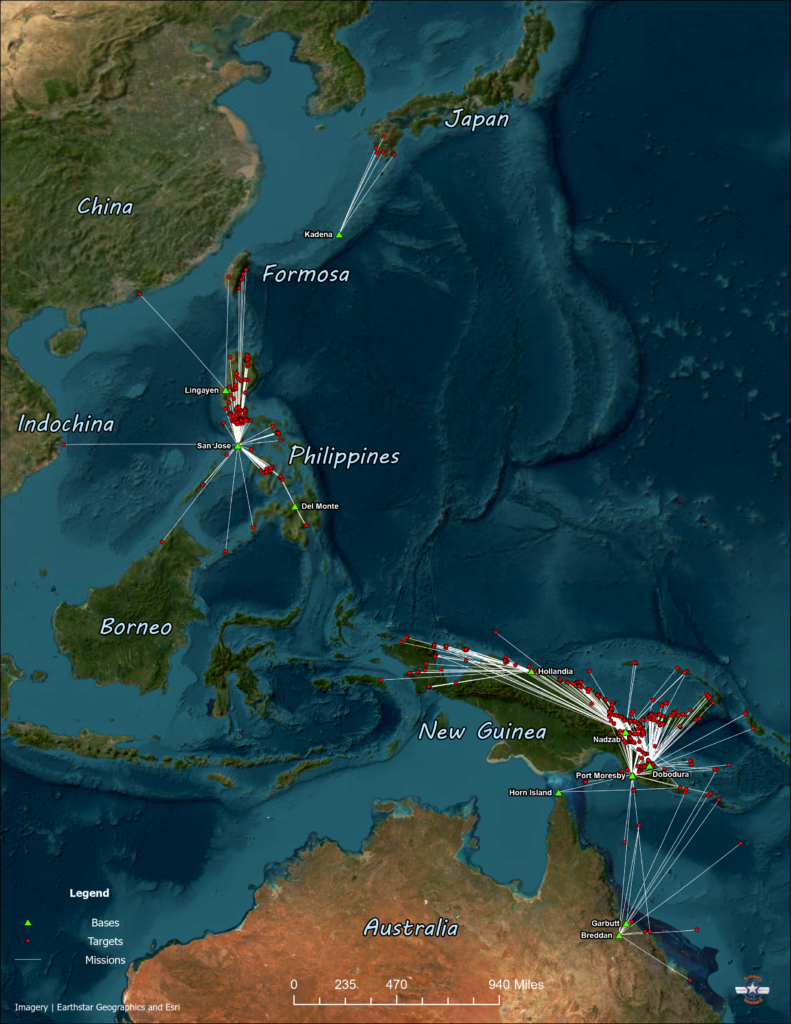
The 3rd Bomb Group, made up of the 8th, 13th, 89th, and 90th Squadrons, had been formed from several Aero Squadrons of the American Expeditionary Forces as the 3rd Attack Group after WW1. The group had remained activated between wars. At the end of February 1942 they arrived in Brisbane, Australia and then in early March they moved north to Charter Towers, Queensland. Based at Breddan Field, they staged out of Horn Island and Port Moresby and flew their first combat mission of WW2 on April 1, 1942. During the course of the war, their aircraft inventory evolved from “what was available” to the “latest and greatest”.
Their 8th Squadron began the war with the Douglas A-24 Banshee dive bomber. The airplane and tactics proved unsuitable for the war against the well-equipped Japanese forces. While the A-24s scored some early victories against enemy shipping, their planes were being shot down at an unsustainable rate. It seems likely that their efforts were a stop-gap measure to occupy the enemy while more and better aircraft were produced.
The A-24 had three hardpoints for bombs: one heavy bomb along the centerline and one smaller bomb under each wing. The airplane crew was comprised of a pilot and a gunner, with the occasional addition of an observer.
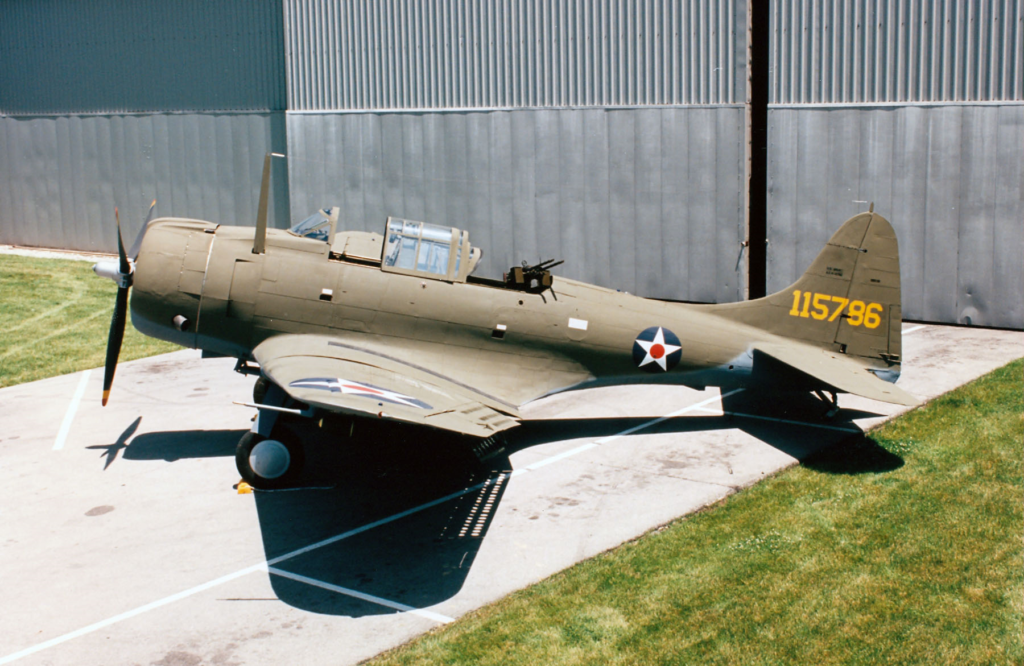
The 13th Squadron was equipped with North American B-25 Mitchell bombers that fared better than the A-24. The 3rd Bomb Group was also equipped with the innovative “Pappy” Gunn, who kept squeezing more .50 caliber machine guns into, and alongside of, the nose of the B-25 until he had created the Strafer modification that would prove so effective against enemy shipping and ground installations.
The B-25 had an internal bomb bay that could hold up to 3,000 pounds of bombs that could vary, depending on mission requirements, from twenty-three pound parafrags to 1,000 pound demolition bombs.
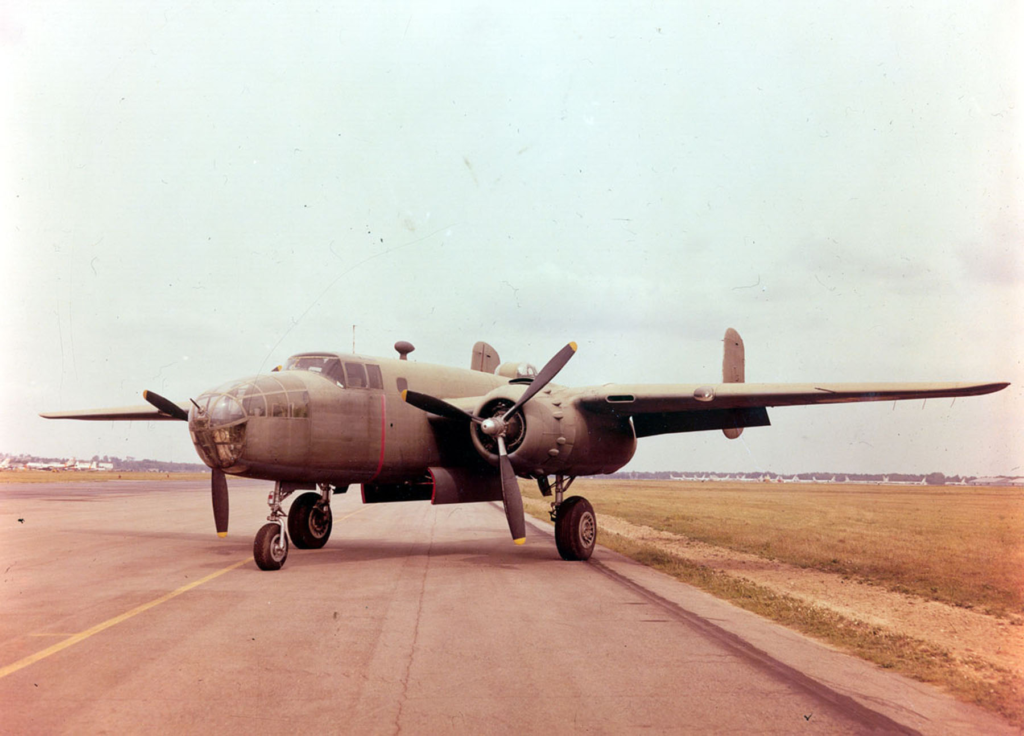
A North American B-25B on display at the National Museum of the United States Air Force, Wright-Patterson AFB, Dayton, Ohio. Photo credit to the National Museum of the United States Air Force.
By the end of August 1942, the 89th Squadron joined the battle flying the Douglas A-20 Havoc. This light bomber carried a pilot, bombardier, and gunner. Additional forward firing .50 caliber machine guns were added to the nose of this plane to increase the lethality. By January, 1944, the entire 3rd Bomb Group had transitioned to flying mostly the A-20.
The A-20 had an internal bomb bay that could carry a bomb load of 2,000 pounds
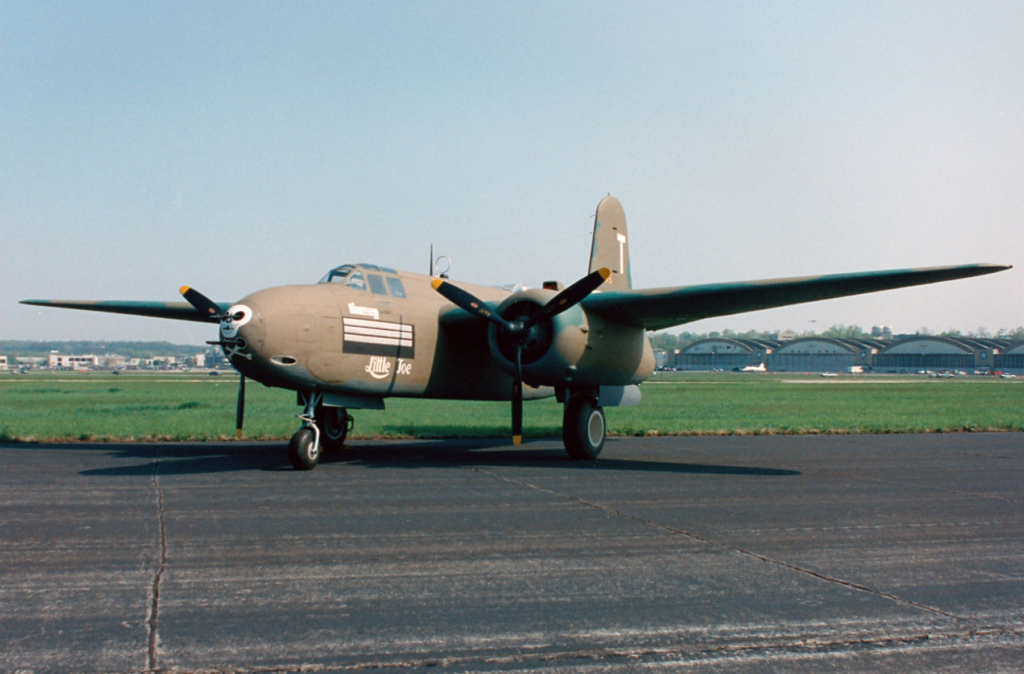
By July of 1945, the 3rd Bomb Group was transitioning to the Douglas A-26 Invader. They flew missions from San Jose, Mindoro against targets on Formosa and then from Kadena, Okinawa against the Japanese island of Kyushu.
The A-26 could carry 5,000 pounds of bombs in an internal bomb bay.
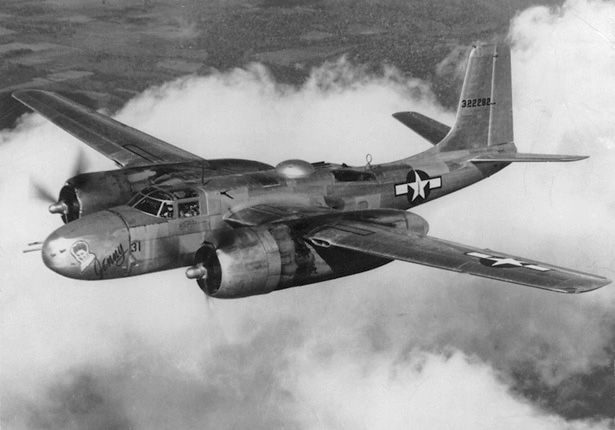
The map at the top of the page is not intended to show every mission flown by the 3rd Bomb Group during WW2. Instead, it is meant to give a representation of the targeted areas that were documented in the Daily Activity section of their Unit History. It does show, however unintentionally, that New Guinea and the Philippines received a lot of their attention. A map providing a more comprehensive display of targets could be possible depending upon the availability, readability, and completeness of the individual squadron histories.
